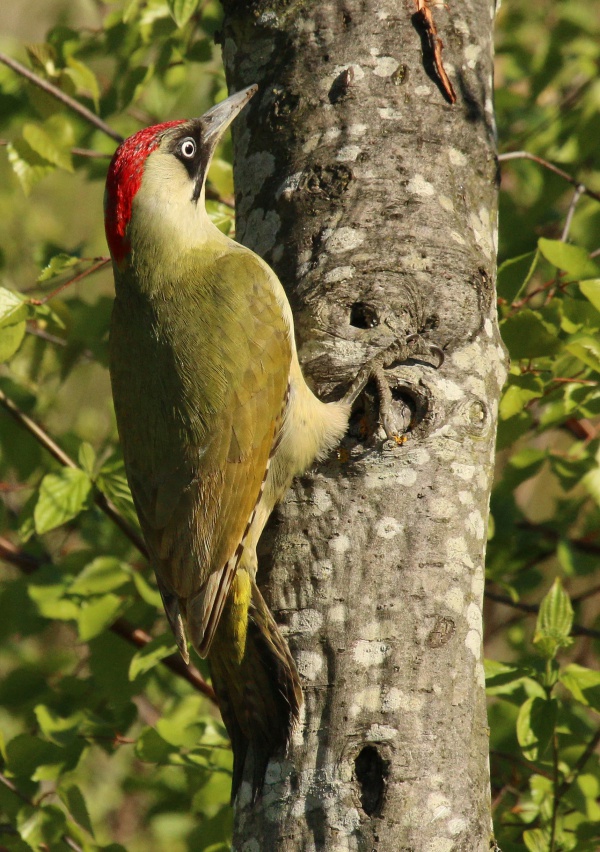Facts About European green woodpecker
The European green woodpecker is a large and striking bird that inhabits much of Europe and the western Palearctic. It is easily identifiable by its green plumage, bright red crown, and distinctive black "moustache." In males, this moustache stripe features a red center, a trait absent in females.
Unlike other woodpecker species, the European green woodpecker primarily forages on the ground, feeding predominantly on ants. They are not known for drumming on trees but can often be heard through their loud, resonant calls echoing through the woods. Though somewhat elusive, they can be spotted if you have a keen eye.
These birds nest in tree cavities and typically lay between four to six eggs. Belonging to the order Piciformes and the family Picidae, the European green woodpecker has three recognized subspecies, each with slight variations. Initially described by Carl Linnaeus in 1758, this species was once grouped with the Iberian green woodpecker and Levaillant's woodpecker but is now considered a distinct species.
European green woodpeckers measure approximately 30–36 cm in length with a wingspan of 45–51 cm. Both males and females exhibit green upperparts, pale yellowish-green underparts, a yellow rump, and the characteristic red crown and nape. They tend to remain in the same region year-round, favoring semi-open landscapes with old deciduous trees for nesting and an abundance of ants for nourishment.
For nesting, they excavate tree holes and lay a single brood of four to six eggs. Their diet consists mainly of ants, which they extract from the ground. Listen for their unique "yaffling" call and observe their distinctive undulating flight for a chance to spot these remarkable birds.

 Montenegro
Montenegro